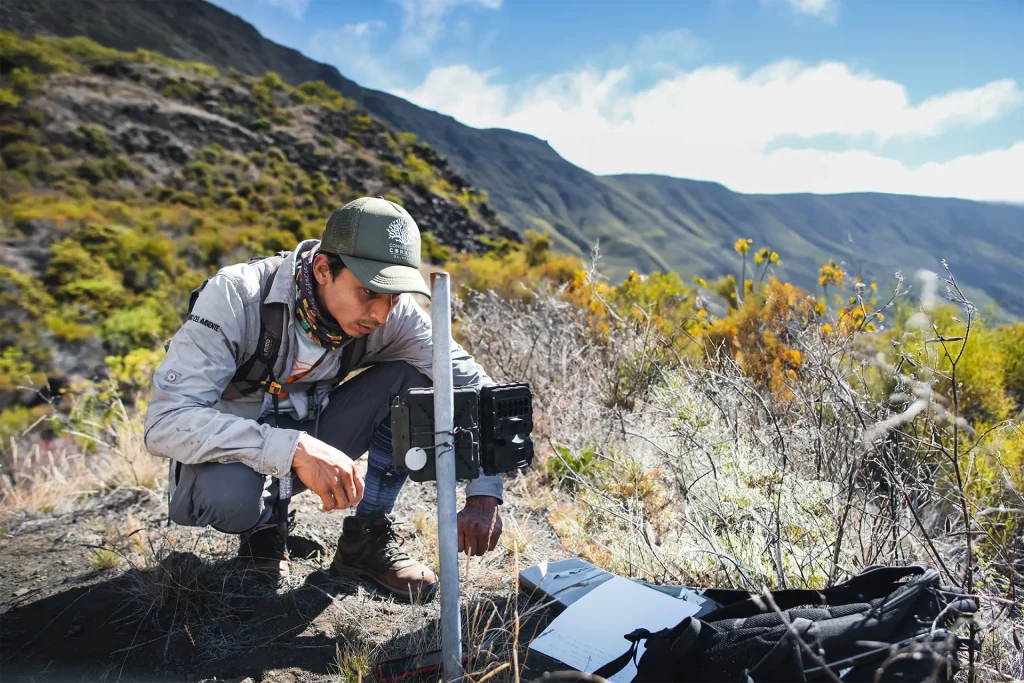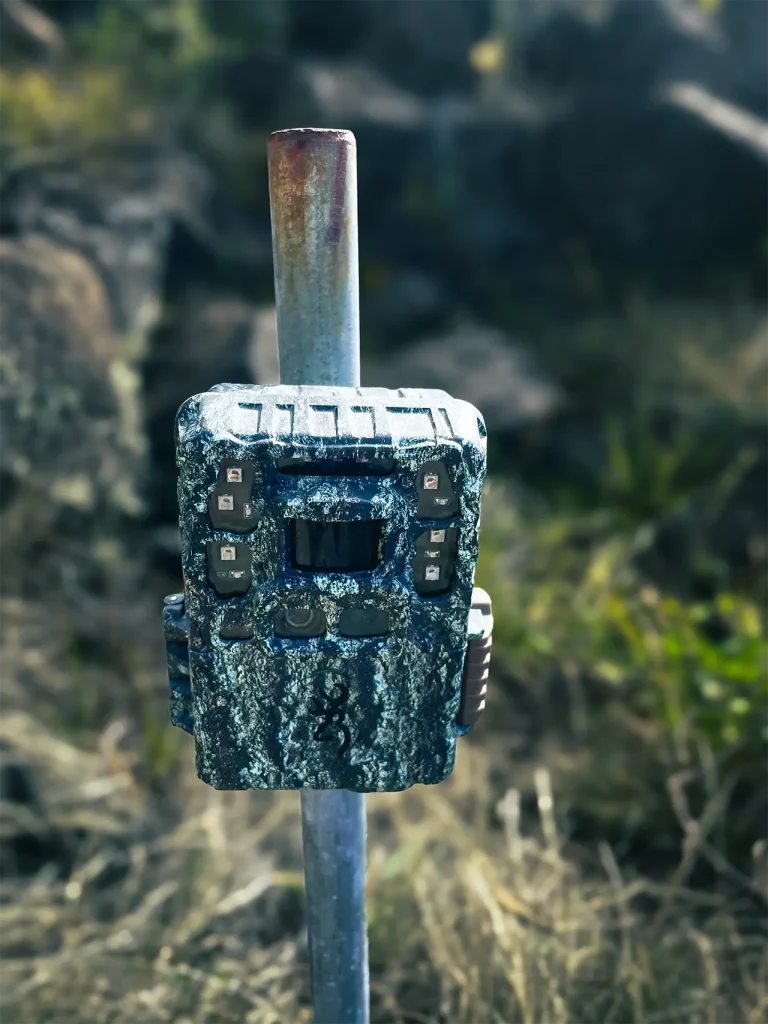Silent Guardians of Galapagos wildlife: Trail cameras
A Trail Camera Network in Galapagos
We have strategically placed trail cameras on several islands, including b>Isabela/b>, b>Santa Cruz/b> and ‘b>Santa Fe/b>. We have strategically placed cameras on several islands including Isabela Santa Cruz Santa Fe and Espanola. The cameras are in operation for several months and capture millions of images as well as data, such as the environmental conditions.
Use of trail cameras for research and monitoring
At Galapagos Conservancy, trail cameras play a vital role in our research. The cameras also help environmental authorities combat wildlife trafficking and poaching. Numerous cameras are positioned at key locations, including nesting sites of important species. This provides us with photographic evidence that documents animal activity and human trespass. Cameras are essential for protecting Galapagos fauna and flora.

Photo: ©Galápagos Conservancy
Pink Iguanas: A Study
We have installed over 50 trail cameras on the Isabela Island slopes, the largest Galapagos Island. These cameras are used to monitor the habitats of Pink Iguanas. ( Conolophus Marthae ). The species was discovered in 1986, and described formally in 2009. It is an endemic of Galapagos. These images help us understand the natural history of the reptiles and the threats that they face.
The footage shows that cats are preying on the young iguanas when they leave their nests underground. The Galapagos National Park Directorate has used this important discovery to develop strategies for protecting hatchling pink Iguanas. This species is near extinction, with only 300 individuals left.
Analyzing images and converting them to data
Our proprietary software organizes and classes the millions of photos our cameras take to create a comprehensive report of what and where was found. This analysis gives us a deeper understanding of species rarity and abundance, population dynamics and behaviour. The cameras, which are set up for long periods of time, allow us to determine population trends and better understand wildlife needs. We can then adjust our conservation strategy and respond effectively to new challenges. Data-driven approaches are essential to developing accurate protection measures, and ensuring that Galapagos’ unique ecosystems are conserved.
Conservation in Galapagos: The Future
Galapagos Conservancy strives to improve our conservation efforts while expanding our technology. We can increase our monitoring abilities and raise global awareness by integrating trail cameras. This will help us gain support for protecting one of the most fragile ecosystems in the world.
We need to gather information in order to make informed decisions and adjust our strategies as necessary. In our next article, we’ll explore how we innovate our efforts in Galapagos with monitoring technology. These devices are complementary and provide us with crucial information on animal migration that helps us better understand the habitat requirements for several species.



